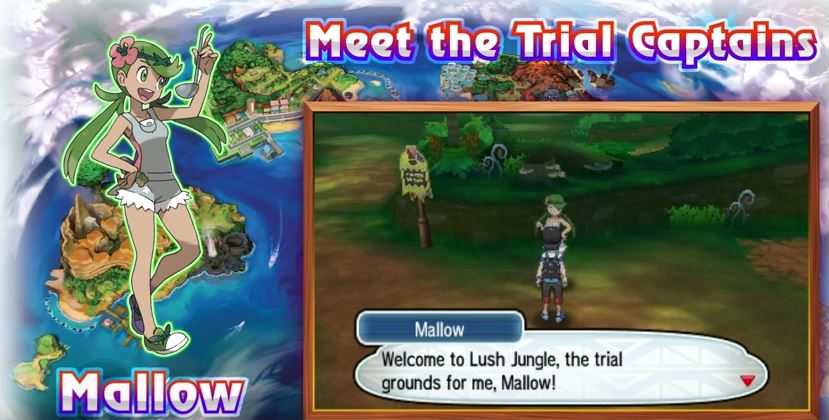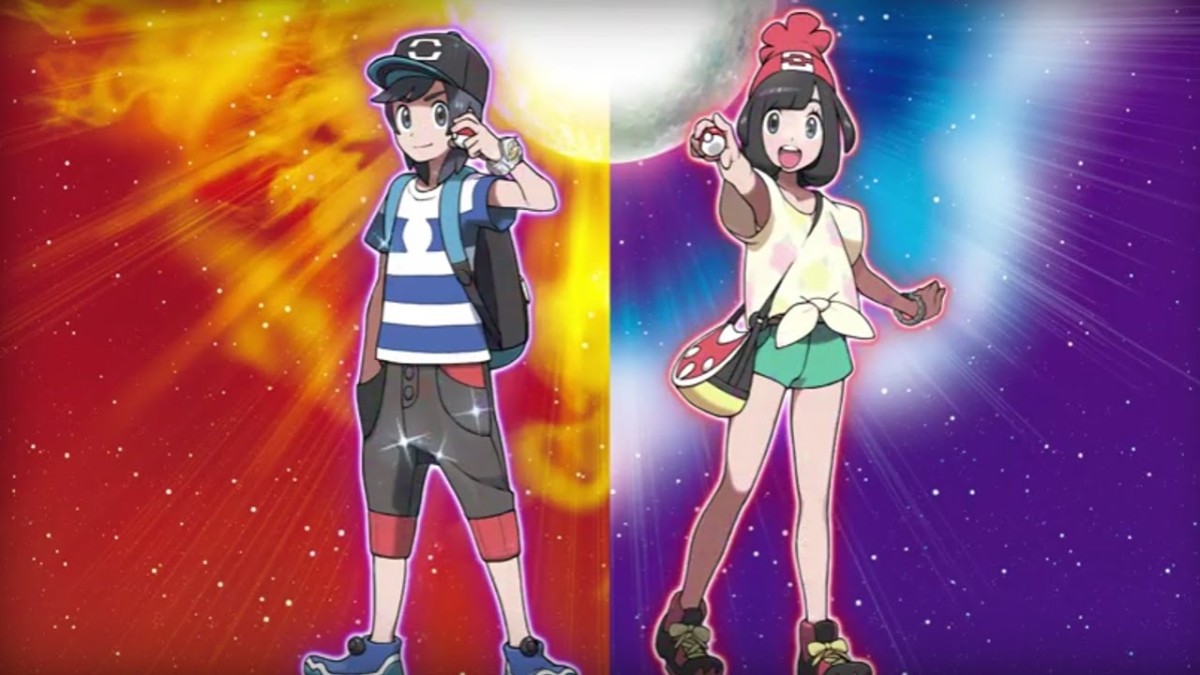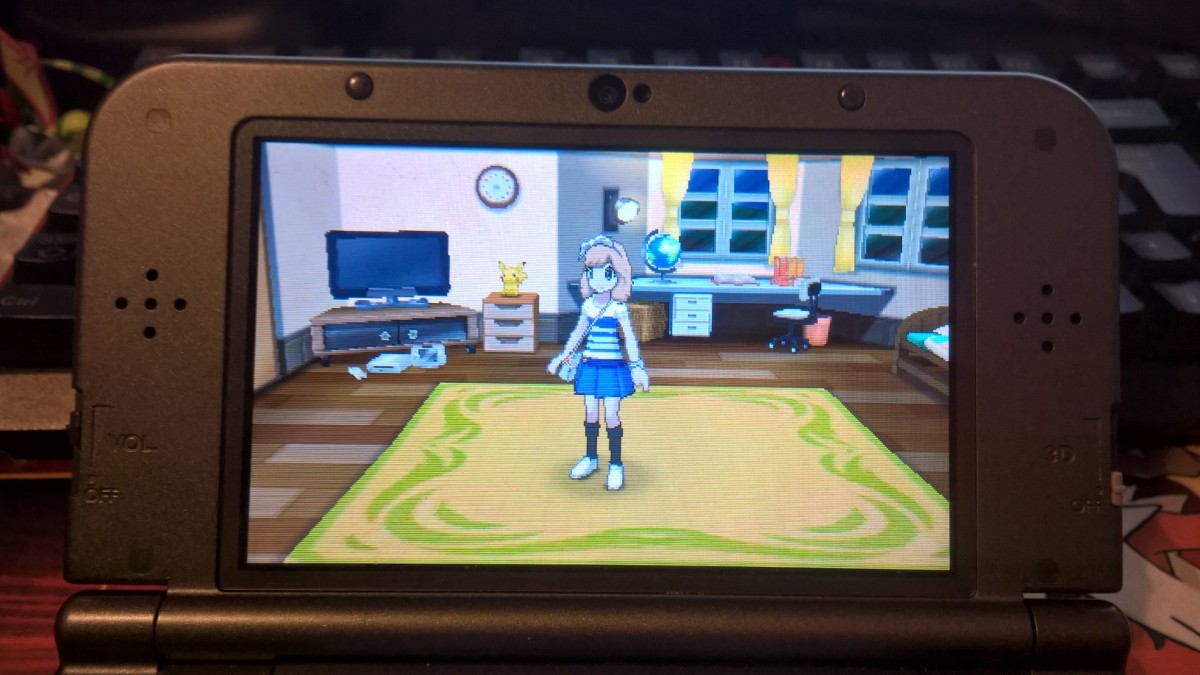It’s been a hell of a year for Pokémon. Celebrating its 20th anniversary, the franchise has been rapidly reintroduced to the world with the smash-hit success of Pokémon GO before converting that rush into serious sales power directed toward the year’s major 3DS release with Sun and Moon. And while these versions lend themselves to a rather unfortunate acronym that last year’s ORAS skirted around – just about – these two celestial bodies aren’t quite the literal gems the 2015 remakes were, but they’re certainly out of this world.
Poor wordplay aside, Pokémon Sun and Moon are two of the finest Pokémon games to land in quite some time. I’m not going to leave that conclusion buried deep within the paragraphs of this review – I’ll just put it out there now. But while I was as hyped as any other trainer during the run-up to release, my playtime was severely lacking due to me just not clicking with the game as well as I usually would. Seeing the credits roll over a month after its release is something that’s incredibly out of character for me, but after pressing on through the slow start, I found a game that eventually reaffirmed my love of the franchise that essentially kick-started my gaming hobby back in 1998.
Just about everyone and their mother knows the general premise of a Pokemon game. You start off as a budding trainer, pick your starter Pokémon from the region’s professor and set out to capture and train more critters while training and battling against other Pokémon and their trainers. You go out into the wide world at an early age, test yourself against 8 gyms and fight to best the League while fending off the ambition plots of a criminal organisation that happily throws in the towel once a pre-teen beats them in an everyday Pokémon battle. It’s a formula that started a craze in the 90s and still gets used today, but Sun and Moon put a little spin on things this time around.

While recent main-series Pokémon games have attempted to shake-up the status quo over the years, they’ve all ended up feeling mostly the same by following the same pattern. Sun and Moon, however, take place in the Alola region – a small cluster of islands that don’t quite adhere to the same progression conventions as familiar territory like Kanto, Unova and Kalos. Instead, trainers in training do battle against powerful ‘Totem’ Pokémon to clear the ‘Island Challenge’ – a series of trials that involve simple mini-games that usually equate to just running around and pressing buttons. The missions themselves offer up a chance for the island ‘Captains’ – and the eventual ‘Kahuna’ – to stand out a little more than your average gym leader, while the battles play more akin to the traditional JRPG boss fight against a strong, singular opponent. For the most part, anyway.
And honestly? It’s a breath of fresh air. While a few gym leaders in the past have had brief storylines leading up to their bouts, they’ve often had trouble really making a name for themselves in the narrative. And though some of the island captains share a similar fate, a good amount of them make numerous appearances throughout the story to help cement themselves as important pillars of the game’s overall tone. While some simple over-leveling could cause the Totem boss fights to become a walk in the park, going in unprepared can see your team destroyed as the powerful beast summons in reinforcements, quickly turning the tides as your single Poké-pal goes up against a buffed up big-wig and its equally capable support. The battles quickly lend themselves to some true strategic thinking that goes from the simple exploitation of type match-ups to working out how to combat the enemy’s beefed-up stats and partner Pokemon aiming to mess with your plans even more.
After a few last-minute additions to my team, I was left feeling relatively under-leveled for most of the battles, meaning I would have to either counter the the enemy on the fly, or come back with a real game-plan after surviving long enough to see the brute’s surprises. Rather than anticipating a gym leader’s preferred Pokémon type and demolishing them with a strong counter-pick, I was consistently switching out my active Pokemon to deal with a new threat in the middle of the brawl. Sure, you’re still aiming to best enough of these challenges to beat tougher island honchos much like the gym system of old, but it’s handled in a way that properly tests your understanding of the Pokémon meta, which makes for far more entertaining battles than a simple ‘Water beats fire’ whitewash.

But even with the impressive new system of Totem and reinforcement Pokémon coming into play, the game as a whole still didn’t capture my heart straight away. While past Pokémon games have suffered from a weaker storyline tacked onto a game all about exploration and growth, more recent additions have attempted to build upon its weaknesses. And while the stories are certainly getting better with each new iteration, it’s ushering in some pacing issues – particularly to the opening hours of what used to be a fairly quick start.
The first island, with its trial and eventual ‘Kahuna’ battle, drags on far too long. While there’s nothing wrong with the island adventure itself, it felt as if the entire thing was just a glorified tutorial crammed with far too many character introductions. While past games would quickly show you the door, both Pokémon X & Y and Sun & Moon both fall victim by revealing too much too soon and taking hand-holding a little too far. By the end of the first island, I was feeling burned out and didn’t look forward to the rest. But with a pinch of perseverance for a franchise I’ve loved since its inception, I stuck it through. And it was certainly worth it in the end.
Both aided and hindered by the varied species of Pokémon scattered around the game’s first dozen hours, I was constantly spoiled for choice when it came to picking the team that was carry me to victory. While games like Ruby & Sapphire or Diamond & Pearl would usually result in similar teams involving your starter Pokémon, a bird, dog or rodent-type critter, Sun & Moon dish out a wide selection of both new and old Pokémon with every new patch of tall grass. It helps keep things feeling unique, but it can certainly be a problem for those short on places to gain fast experience points should they be a little too indecisive of which beasts to bring with them. And finally ridding the use of Hidden Moves means we’re no longer tied to artificial choices when it comes to picking out our single-player team.

Thanks in part to the appearance of Totem Pokémon, the S.O.S system (reinforcements) and Z-moves, battling as a whole feels fresher than even when Mega Evolution made its way into the game with Pokémon X & Y. The aforementioned Totem battles bring a hint of competitive strategy to the single-player experience while Z-moves – which can be activated once per battle by having a Pokémon hold a stone that matches the type of one of their moves – breathes new life into Pokémon once thought to be too ineffective to be used by most players. S.O.S battles paired with the ‘Festival Plaza’ (a system similar to Black & White 2’s Join Avenue) means EV training is easier than ever, further lifting the entry barrier between single player and competitive play.
Without spoiling the overall story, Sun & Moon offer up a particularly strong narrative similar to that of Pokemon Black & White (and their direct sequels). Those accustomed to the doom and gloom of most of JRPGs would likely scoff at the light-hearted tone of most Pokemon titles, but while the main games often serve up the precursor to cataclysmic events before being thwarted by the player and a handful of story characters, we’re offered a more personal tale this time around revolving around Lillie, a mysterious girl with an equally mysterious Pokemon.
It’s one that certainly offers up its fair share of twists and turns – however predicable they may sometimes be – but its one that manages to make use of the series advancements across portable technology to have its characters show far more emotion alongside their actions. Instead of static sprites being carried by their text, we have full-body motion, facial expressions and stronger music playing a bigger part in a more personal tale. It takes a little while to get going, but it’s certainly worth the time of those skeptical of the more text-heavy, light-weight Pokémon plots.

Without fail, Game Freak and The Pokémon Company have created another pocket classic. The slight deviations somehow revitalized a relatively tired system, yet the welcome, continued use of a 3D engine has ushered in a new age for the 20 year old RPG series. The vast amounts of character customization helps the journey feel far more personal rather than riding on the hope that you’ll identify with a shoehorned, silent protagonist; and totem battles bring the game more in-line with traditional JRPGs by acting as a way to better prepare the new generation for the game’s incredibly in-depth competitive scene should they decide to break through its simple surface.
Though there still isn’t much for single-player adventurers to do once the credits roll, the overall adventure spans more than enough hours to satisfy most casual RPG fans. It’s a welcome treat for the avid Pokémon fan, a fine point of return for a former trainer and the perfect entry excuse for anyone joining in for the first time.
